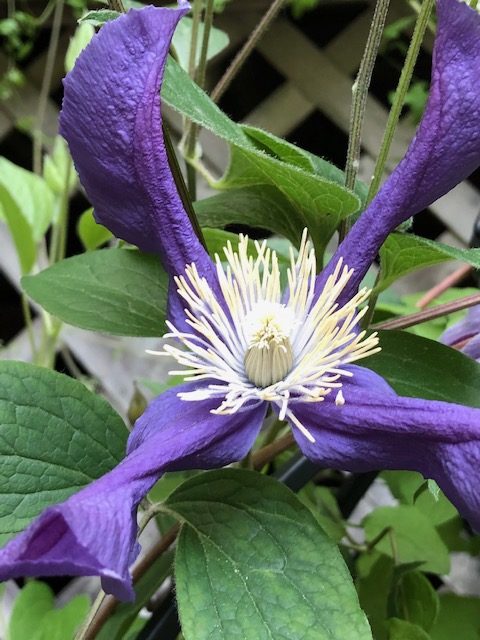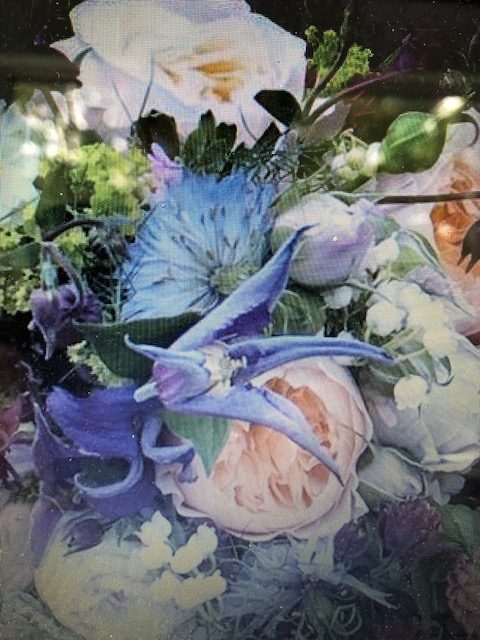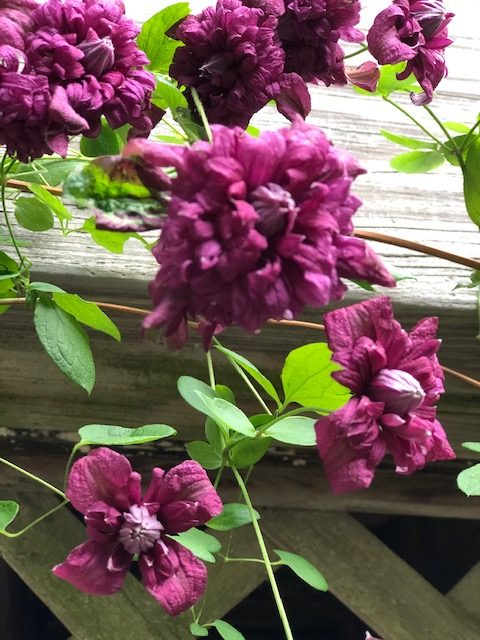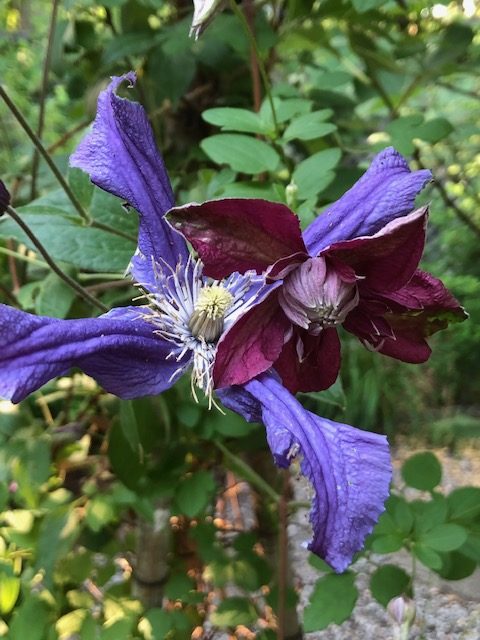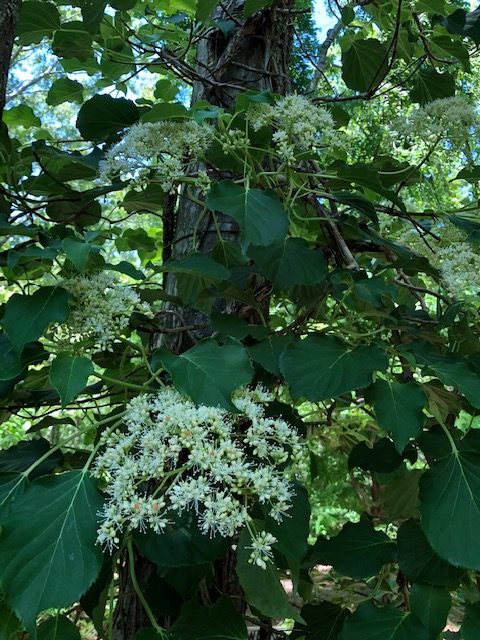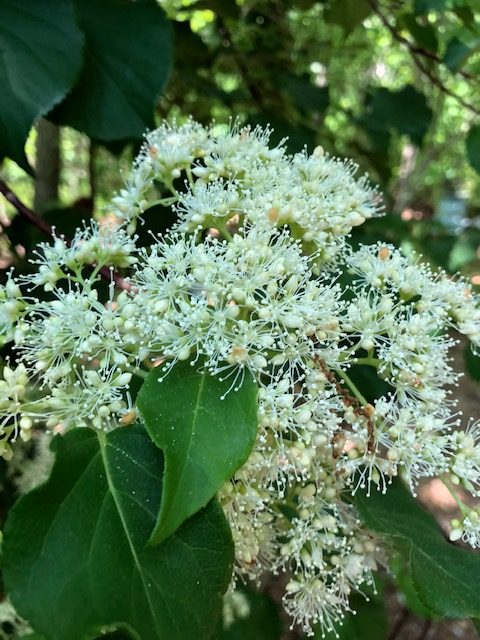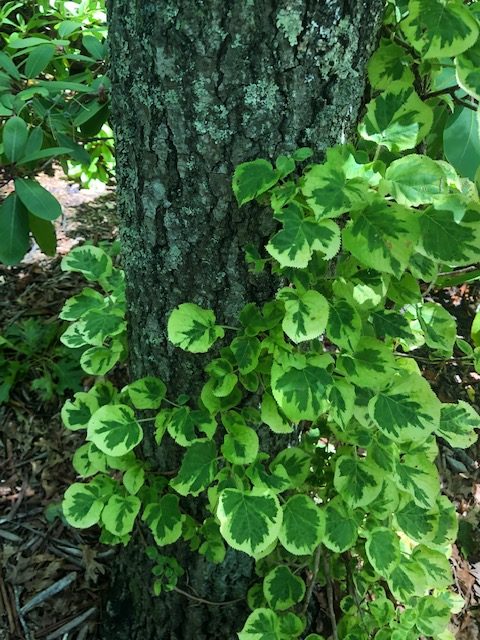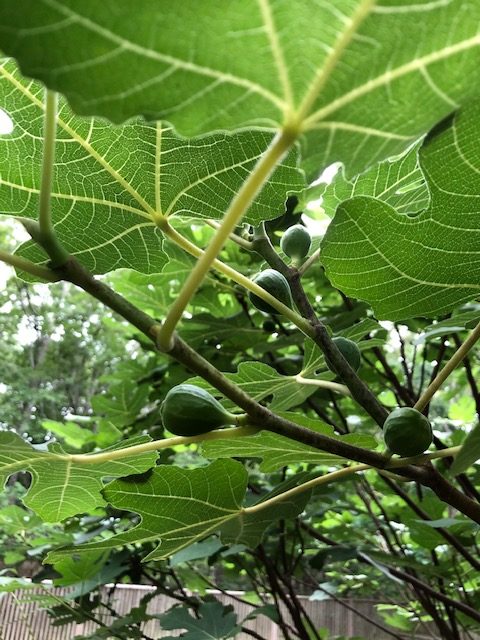Add a superb vertical dimension to your garden with plants that have lofty aspirations: ramblers, scramblers, climbers, and twiners. Consider a few of my favorites:
Award-winning Clematis Blue Pirouette (a/k/a C. ‘Zobluepi’) Z 5-8 has beautiful blue/purple open-faced flowers with four elegantly twisted, curled sepals, and long, strong, flowering stems. It was the first Clematis sold commercially as a cut flower and several stems were included in Queen Elizabeth’s traditional bouquet at the 2015 Chelsea Flower Show. Photos below.
Blue Pirouette produces abundant bloom in summer and will grow 5-6 feet tall. In my garden it thrives in a large container with obelisk support.
Pirouette’s container mate is the award-winning, Clematis ‘Purpurea Plena Elegans’ Z 4-9, a beloved old cultivar that begins flowering a little later than Pirouette and can attain a height of 10-13 feet. Masses of double, vibrant magenta flowers attract pollinators — and Blue Pirouette. Photos below.
Both Clematis belong in Pruning Group 3 and should be hard pruned in early Spring because they bloom on new growth. Grow in sun or part shade, with well-drained, moist, rich, alkaline soil. I fertilize with compost and wood ash.
Climbing Hydrangea (Hydrangea anomala subsp. petiolaris) Z 6-8 is an outstanding, deciduous woody ornamental. In summer, against a backdrop of handsome, dark-green foliage, it produces showy, large, flat, lacecap type flowers. (Note that the flowers of subsp. petiolaris often lack the sterile flower edging of the traditional lacecap Hydrangea.) When the fertile flower buds open, they release an intoxicating fragrance that carries on the air. The plant is a self-help climber: aerial roots — “holdfasts” — grow along the main reddish-brown stem and will attach to most vertical surfaces. But the support must be substantial — this hefty Hydrangea can reach thirty feet or more. Mine grow up large, established oak trees. Photos below.
Provide well-drained, rich, moist soil. The plant is pH-adaptable but may develop chlorosis in high pH soils. It can prosper in sun or shade but should be protected against the intense afternoon sun. If you need to prune, do so right after flowering before the new buds appear; the plant flowers on old wood. It can withstand a hard prune but it probably won’t bloom the following year.
Among its many assets, the hydrangea’s flowers attract bees and butterflies and when the flowers fade they are replaced with attractive seedheads. And the foliage turns autumnal yellow in the Fall.
I also grow the cultivar, Hydrangea ‘Miranda’. While it has been in my garden for many years, it has never bloomed. I don’t know why and the plant ain’t talkin’. Yet, for me, it’s worth keeping for its beautiful variegated foliage. Photo below.
bric-a-brac:
1. While we have all been suffering this summer’s oppressive heat and humidity my carefree fig tree has been dancin’ a happy jig. It is loaded with figs that are quite mature for July. Photo below.
2. I recently saw—and recommend— the 1937 award-winning film, “The Life of Emile Zola,” a powerful drama about a big lie and a courageous fight for truth and justice. Sound familiar?
